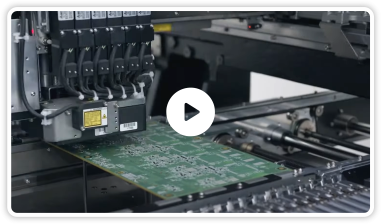Manufacturers traditionally use a thick layer of soft gold on PCBs for Gold ball wire bonding. This requires plating the Copper traces on the PCB with a layer of Nickel, followed by an electroplated layer of soft Gold, measuring about 30-50 µin in thickness. The properly plated Gold layer forms an excellent surface for wire bonding. Although the method is eminently suitable for fine-pitch Gold ball bonding, it is expensive.
However, common tin-based solder alloys dissolve large quantities of Gold during reflow, leading to irreparable damage to Gold conduction patterns and making the solder joint brittle or susceptible to fatigue cracking. Indium-based solders are better and more satisfactory on Gold films, as Gold is essentially insoluble in Indium.
Traditionally, manufacturers use wire bonding to interconnect chips with chip carriers. They bonded a Gold wire to an Aluminum or Copper pad. However, the intermetallic between Gold and Aluminum/Copper tends to reduce the reliability of the bond. Moreover, the bonding of dissimilar metals compromises the robustness of the bonding process. Normally, a layer of oxide covers the Aluminum/Copper surface, and the manufacturer must remove this by scrubbing or plowing, to form a good contact between the Gold wire and the pad, leading to potential mechanical damage to the pad.
With electroplated Nickel and Gold on the Copper Pad, bonding between the Gold wire and the Gold on the pad causes no intermetallic, thereby improving the yield. As the Gold surface always remains oxide-free, it does not need scrubbing to make contact, and the quality of bonding improves. This has the additional advantage of reducing the size of the pad, resulting in higher I/O counts for chip design, while realizing smaller chip sizes.
Electronic packaging and surface finishing industries are well aware of traditional Nickel and Gold electroplating processes. While Nickel serves as the barrier layer, Gold forms the bonding surface. Usually, manufacturers plate the Nickel layer through the photoresist onto the Copper pads. After stripping the resist and etching the copper, the fabricator usually applies a polyimide passivation layer. This passivation layer prevents corrosion of the Copper layer sides under the Nickel. Lastly, the fabricator plates the immersion gold onto the Nickel to provide the top wettable surface.
After the fabricator has created the Gold/Nickel plating, the PCB requires baking for one hour under 360 °C, to allow the passivation layer to cover the sidewall of the Copper layer. However, this process diffuses Nickel into Gold, rendering the Gold harder, making it more difficult to bond wires. Therefore, the conventional plating approach is not suitable for generating robust Gold wire bonding pads.
Therefore, manufacturers use a selective plating process for electroplating metal using titanium as a conducting layer. By selective plating, the electroplated Nickel and Gold encapsulates the Copper layer underneath to prevent corrosion.
In process, fabricator first uses a sputtering process deposit liner of Ta/TaN on Copper layer, before using photolithography process for putting photoresist on layer. He or she then removes unwant Copper between pads electroetching. After stripping the photoresist from the surface, the fabricator then electroplates Nickel and Gold on the Copper pads through the Ta/TaN liner.
Final Nickel thickness is about 1 µm, while Gold thickness is about 0.5 µm, with the Copper layer completely buried underneath the Nickel and Gold layers.









